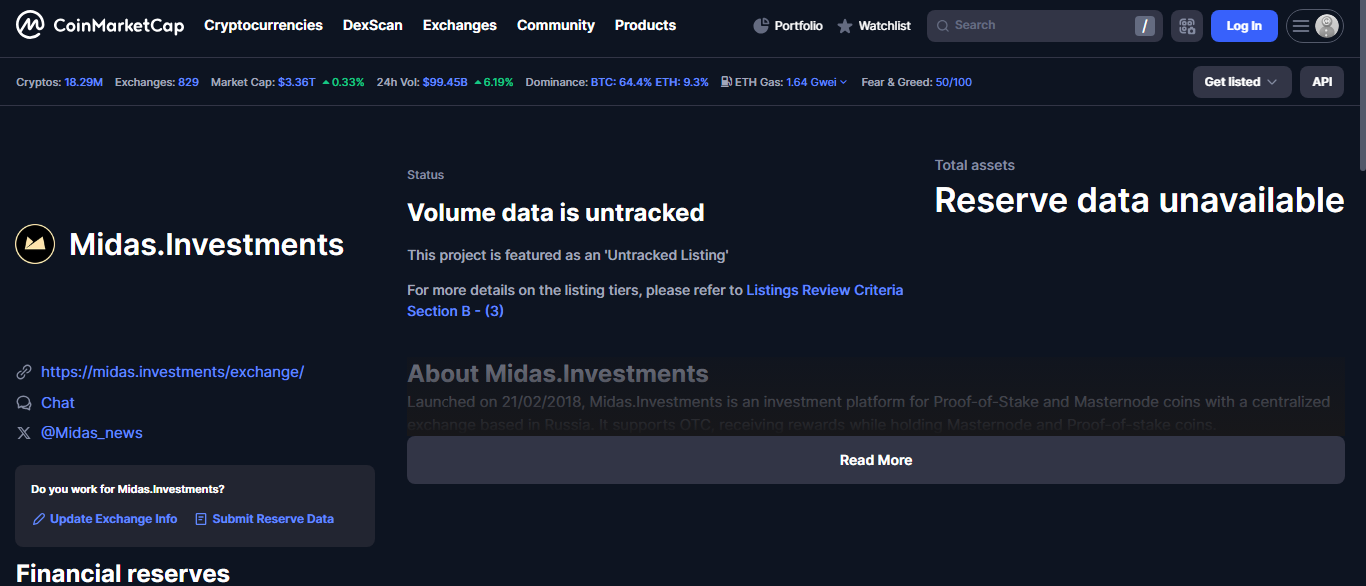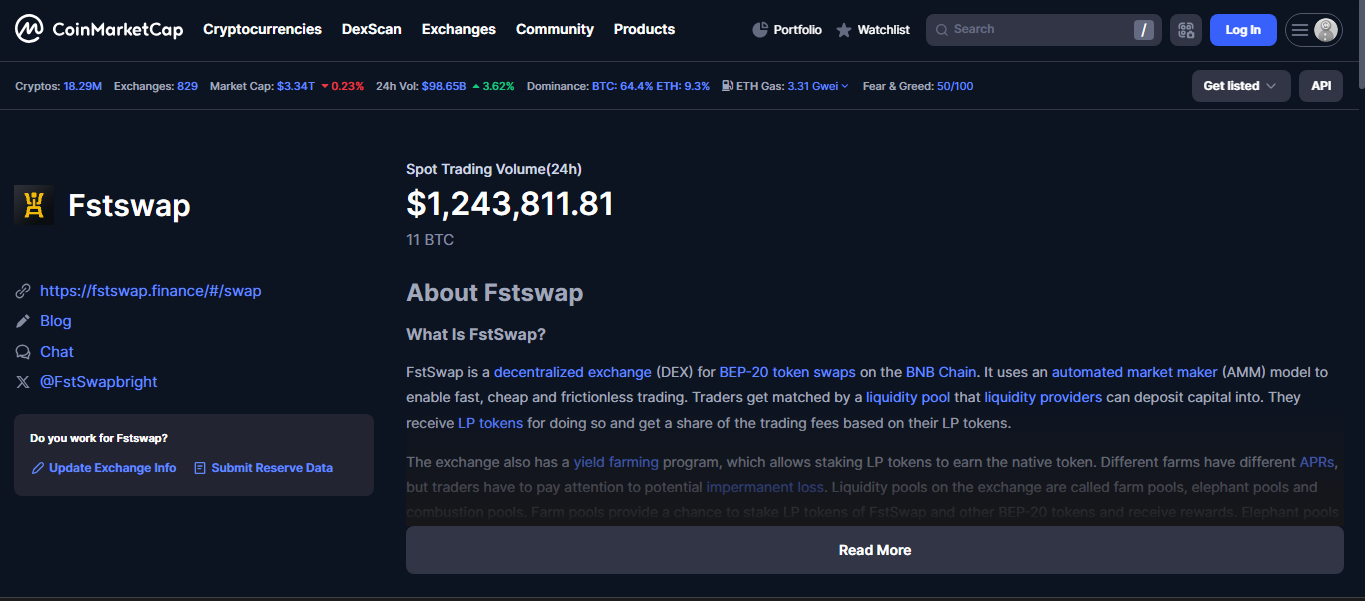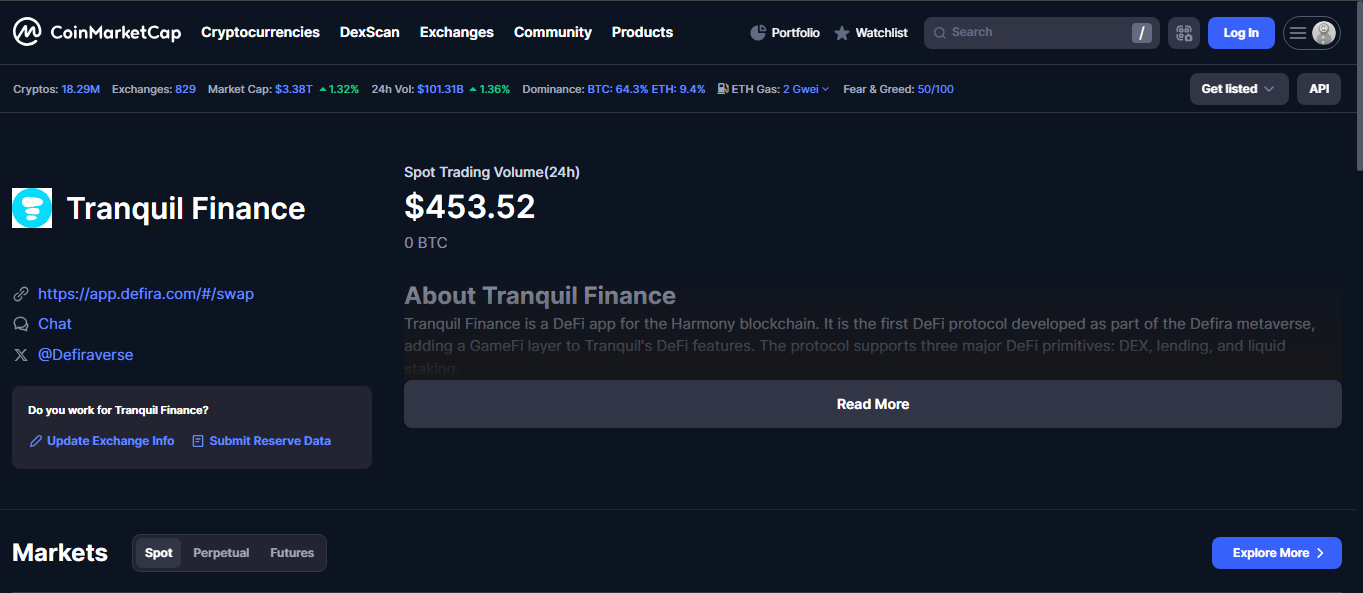ICO Rankings Blog
Discover a wealth of knowledge and stay up-to-date with the latest trends, news, and insights in the cryptocurrency and blockchain space through our blog.
Discover a wealth of knowledge and stay up-to-date with the latest trends, news, and insights in the cryptocurrency and blockchain space through our blog.
Midas Investments launched in early 2018 as a custodial CeDeFi platform focusing on yield strategies across Proof-of-Stake and masternode assets. It promised high returns through automated portfolio tools, liquidity provision, vaults, and its own native token incentives, blending DeFi yields with custodial simplicity.
The team marketed it as a middle ground between classic centralized finance and the transparency of DeFi, highlighting algorithmic management and around-the-clock monitoring to keep funds optimized.
he platform featured several main products. Their stable YAP was a mix of BTC, ETH, USDC, and MIDAS, offering roughly 20 percent annual returns with monthly rebalancing. They also ran a Masternode YAP using BTC and a DeFi YAP that pulled together different DeFi tokens, aiming for around 26 percent APY. Underneath, automated systems claimed to move holdings across Uniswap V3 and other pools to keep payouts flowing, though real verification of these mechanisms was never fully public.
Midas said it secured assets with Fireblocks-style multisig setups and kept most reserves in cold storage. Early on, some users praised daily rewards, frequent updates from the team, and regular outreach on YouTube or community chats. Over time, though, others noticed concerning signs like sudden conversions of customer balances into MIDAS tokens without clear consent, plus scattered reports of delays when trying to withdraw. Doubts about the CEO’s profile and shifting promises added more fuel for skepticism.
The company was registered offshore, in places like Russia or Seychelles, but never held licenses from primary or even mid-tier regulators. Several analysts flatly called it unregulated and warned people to stay cautious. While the first wave of community feedback tended to be positive, later comments pointed to absent KYC checks and levels of risk too high for casual users. With no tracked volumes on major data aggregators, it remained a niche operation without strong visibility or industry recognition.
Here is a balanced look at what Midas Investments offered and where the key problems stood.
Pros:
Cons:
Midas Investments set out to be a powerful passive income tool by combining easy custodial services with the returns of DeFi strategies. While early adopters saw daily payouts and praised the hands-off design, mounting concerns changed the picture. The lack of any formal regulation, mixed user stories about fund safety, and eventual negative commentary from analysts made the risks stand out more than the rewards. For cautious investors, it was always better to limit exposure or steer clear entirely, treating Midas as a speculative gamble rather than a solid financial anchor.

FSTSwap launched as a community-driven decentralized exchange built on Fantom, aiming to simplify token swaps while tapping into Fantom’s fast finality and low gas costs. It positions itself as a lean, efficient platform for swapping, farming, and staking within Fantom’s ecosystem.
The focus is entirely DeFi-first, with no centralized custody or fiat on-ramps involved. That point keeps it simple, but it also limits appeal to users outside of the Fantom sph
The platform offers a clean swap interface with typical features like token selection, slippage controls, and visible pool sizes. Users can farm by providing liquidity to pools and earn fees along with yield rewards. Staking options for the FST token add another passive layer for investors. The layout is clear without fluff, making it easy to jump in, but the lack of advanced analytics could leave some margin-spicers wanting more.
Across FSTSwap’s pools, activity is modest. There’s more movement in major pairs like FST–USDC or FTM–USDC, while smaller pools barely register volume. Trading $5–10K typically processes smoothly, but beyond that, price impact becomes noticeable. Daily volumes remain limited, making it practical for small users but risky for anyone pushing big trades or deep strategies.
FSTSwap runs entirely on smart contracts, meaning it never controls user funds beyond pending transactions. Contract reviews have been mentioned in community channels, but no publicly shared third-party audit reports are available. That means users rely on community trust and Fantom’s safety track record, which is improving but still maturing. Security-conscious users should check contract details themselves before committing significant amounts.
FSTSwap fits small to mid-size transactions within the Fantom DeFi community, especially for holders of FTM or Fantom-native tokens. It may also appeal to passive yield seekers who are comfortable with staking and farming on smaller platforms. It is less suitable for traders needing large liquidity, deep volume, or institutional-level tooling. For those ready to experiment on Fantom, it’s a straightforward introduction to decentralized exchange mechanics.
Pros
Cons
FSTSwap offers a light, intuitive entry into DeFi on Fantom with token swaps, liquidity farming, and staking opportunities all under one roof. For small and experimental use, it functions smoothly and keeps fees minimal.
However, its limited trading volume, lack of formal audit transparency, and emerging user base mean that larger players should pause before diving in. If you’re already in the Fantom ecosystem and want a simple DEX experience, FSTSwap is worth a look - but approach with cautious sizing and honest expectations.

Trader Joe V2.1 relies on a novel Liquidity Book model, where liquidity is split into discrete price bins. This means you can place assets at precise price ranges, which can reduce slippage and improve capital efficiency compared to traditional AMMs. The active bin carries both tokens and earns fees, while neighboring bins remain dormant until price shifts. This setup turns liquidity provisioning into a strategic exercise, as much about range placement as token pairing.
The platform charges a 0.30 percent swap fee, divided between liquidity providers and staking pools for JOE token holders. Fees vary by pool based on volatility and risk, making each pairing a tailored decision. Traders interact through a polished interface that supports spot swaps, farming, staking, lending, and NFT launches. Working across Avalanche and Arbitrum, users enjoy low gas costs but must grasp the mechanics of bin ranges to truly take advantage.
As of early 2025, Joe V2.1 maintains around $360 million in total value locked. Stablecoin pools, like USDT-USDC, report monthly APRs north of 14 percent, driven by swap fees. Community reports highlight roughly 6.6 percent average JOE staking returns over months. Though TVL speaks to significant adoption, casual users may find the bin-based model and yield variability more complex than basic liquidity pools.
Trader Joe leverages Avalanche’s secure architecture and has seen third-party audits from reputable firms. The bin-based model narrows risk compared to older AMMs by concentrating capital where it’s actively used. However, users still face exposure to impermanent loss - especially if price wanders beyond their chosen bin. Overall, it blends innovation with safety, yet demands attentive capital management.
This version suits DeFi-savvy users who want to fine-tune liquidity placement and yield strategies. It rewards those who actively set ranges and monitor volatility or want tokenized exposure with farming or NFT benefits. Traders seeking casual swaps or minimal involvement might find the setup overly technical. If you're looking for precision control and yield optimization, it's a solid choice - just be prepared to learn.
Pros
Cons
Trader Joe V2.1 elevates Avalanche’s DeFi experience with its Liquidity Book innovation, letting users strategically deploy capital for maximal impact. It's powerful for those ready to learn and engaged in yield strategies, but too nuanced for simple swap needs. With solid TVL and audits in place, it’s a reliable yet advanced DEX - ideal for active participants who understand how to manage liquidity risk and range placement effectively.

Tranquil Finance is built on the Fantom blockchain and focuses on stablecoin liquidity pools. Users can deposit assets like USDC or TUSD into those pools and earn yield from trading fees and protocol incentives. To deepen commitment, participants can also stake Tranquil's LP tokens in the Burns Vault, earning a share of the platform’s fees. This approach aims to align user interests with the long-term health of the protocol.
The platform launched its first stable pools in mid‑2024 and quickly rewarded early users with moderate incentives. Their roadmap emphasizes expanding to new stablecoins and decentralizing governance via a Tranquil DAO. There’s no leveraged trading or exotic strategies here - everything is built around low-volatility asset flows. The emphasis is squarely on conservative yield rather than speculative complexity.
Initial APRs for core pools hovered in the high single digits, boosted further by staking rewards. Liquidity currently remains modest - well under $50 million TVL - which helps efficiency but increases slippage risk for larger trades. Daily trading volume offers only thin fee income, so returns hinge more on token-based incentives than steady swap flows. Users should approach with small amounts first to test performance and fee consistency.
Tranquil deployed audited smart contracts before going live and makes code publicly visible on Fantom’s explorer. They haven’t experienced any security incidents so far, and audits spotlight core protocols but not all vault features yet. Since Fantom is a lower-cost, rapidly growing DeFi network, it offers value but carries relative novelty compared to Ethereum or BNB. That means platform maturity is improving - but still early stage in broader DeFi terms.
Tranquil suits users seeking stable-yield opportunities without dealing in volatile tokens or margin. It appeals to medium-term holders interested in staking paired stablecoins and passive farming. It may not satisfy traders looking for complex strategies, exotic assets, or high-speed arbitrage. For cautious DeFi users in Fantom’s ecosystem, it could represent a safer and simpler option.
Pros
Cons
Tranquil Finance provides a straightforward stablecoin yield platform on Fantom with shared benefits for liquidity providers and stakers. Its simplicity and backed audit process make it appealing to safety-conscious DeFi users.
Yet its small scale and reliance on incentives mean that bigger investors may see limited returns or face liquidity concerns. If you want a measured entry into Fantom’s earning opportunities, Tranquil is worth exploring - just start small and monitor pool dynamics before committing more capital.

SecondBTC launched in June 2018 and is based in India. It’s a centralized cryptocurrency exchange that supports crypto-to-crypto trading across 38–42 pairs and offers roughly 28–39 tokens. While it doesn’t yet support fiat deposits, it targets users who already hold digital assets and want to swap them directly on a local platform.
As of early July 2025, the platform reports a daily trading volume close to $46 million, roughly 447 BTC. That places SecondBTC around the 111th to 112th rank among centralized exchanges worldwide. Liquidity is modest, with most activity focused on a handful of pairs like BTC/USDT, ETH/USDT, and USDC/USDT. For small trades, this is generally fine, but larger orders might face slippage due to thinner books.
The exchange keeps its fee model simple:
All in all, SecondBTC’s fees are competitive enough to suit casual or mid-level traders who want predictable charges.
Depending on where you look, SecondBTC lists between 28 and 42 different cryptocurrencies, with about 38–50 trading pairs. You’ll find big names like BTC, ETH, USDC, XRP, and BNB, along with trend tokens like TON, PEPE, and DOGE. It’s a fair mix for those hunting mainstream or meme assets, though if you’re chasing obscure DeFi coins, the catalog may feel limited.
SecondBTC does not accept fiat deposits. New users must bring crypto from another wallet or platform. That means if you’re just starting out and hold only fiat, you’ll need a separate on-ramp service first. This setup positions the exchange more for people who already own crypto and simply want to trade within it.
Security is where things start to wobble:
For traders, that’s a signal to keep only modest balances here and not treat it as a long-term vault. While there have been no major breaches publicly reported, the absence of audits or strong oversight means risk remains.
SecondBTC’s interface gets decent remarks from users for being straightforward and clean. It allows login directly through MetaMask, skipping the typical email and password hassle. This speeds things up for crypto-natives but could confuse beginners. The exchange also claims 24/7 support, though details on actual live chat or response times are vague. Finally, there’s no dedicated mobile app, which could limit appeal for those wanting on-the-go access.
Before signing up, here’s a quick look at where SecondBTC stands out - and where it doesn’t.
Pros
Cons
SecondBTC could make sense if you:
It’s probably not your first pick if you’re hunting for fiat integration, a heavily regulated venue, deep liquidity, or a slick mobile platform. Think of it more as a side tool than your primary trading hub.
SecondBTC delivers a straightforward crypto-only exchange with low flat fees, MetaMask access, and a fair spread of popular and meme tokens. That makes it interesting for hobbyists or those managing side portfolios. But its limited liquidity, lack of fiat options, unverified security posture, and zero regulatory footprint mean it’s best used cautiously.
If you’re trading small sums and want to diversify into a few alternative coins, it might work. For anything more serious, pairing it with larger, audited platforms would be the safer move.

Backpack is a next-generation centralized crypto exchange launched in March 2023 and headquartered in the British Virgin Islands. Built by former FTX and Solana developers, it integrates trading, wallet, lending, NFT, and cross-margin features under one roof.
Backpack reached around $128–156 million in 24-hour spot volume, equivalent to 1,193–1,434 BTC, primarily driven by SOL/USDC activity. It also holds reserves of roughly $113–123 million on the platform. A strong trust score of 9/10 indicates high legitimacy and liquidity.
Users can trade over 55 cryptocurrencies across 55 spot pairs, including BTC, ETH, USDC, SOL, and trending tokens. The platform also supports futures and isolated margin trading, as well as lending and yield on unrealized PnL. Sub-accounts and cross-margining offer institutional-grade flexibility.
Backpack offers competitive maker/taker fees: 0.085% maker and 0.095% taker. Additional benefits include trading fee discounts via its Mad Lads NFT program and tiered rewards tied to trading volume.
Unlike some new exchanges, Backpack provides fiat on‑ramps via USD, EUR, and GBP using wire or card payments. This bridges the gap for both newcomers and seasoned traders.
Backpack is licensed by VARA in Dubai and pursuing compliance in Japan. It implements zero-knowledge proof of reserves (zk-proofs), multi-party computation, and regular security audits. The platform also integrates hardware wallet support, scam detection, 2FA, and anti-phishing measures as core security features.
The web and mobile interfaces are polished and intuitive, praised for seamless navigation and multi-chain wallet support. MetaMask-like ease and NFT wallet capabilities make onboarding smooth, especially for Solana and Ethereum users.
Backpack operates a dedicated learning hub, detailed guides, live chat, email support, and an engaged community on Twitter, Telegram, and Discord. While generally responsive, some users noted occasional delays during high-demand periods.
Pros
Cons
Backpack suits traders who want:
This makes it a strong option for intermediate to advanced traders. Beginners may appreciate the learning materials and UX, but should approach margin and futures with caution.
Here’s a concise overview:
Backpack is a polished, feature-rich newcomer that delivers on its promise of a unified trading, wallet, and NFT experience. With strong liquidity, good fees, fiat access, and robust security under VARA oversight, it punches above its age.
Still, prudent users should be mindful that some features remain new and that regulatory coverage continues to expand. For traders seeking integration and clarity, Backpack is worth serious consideration - but pairing it with a more established exchange could provide additional stability and coverage.
